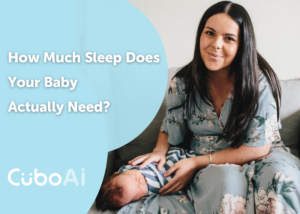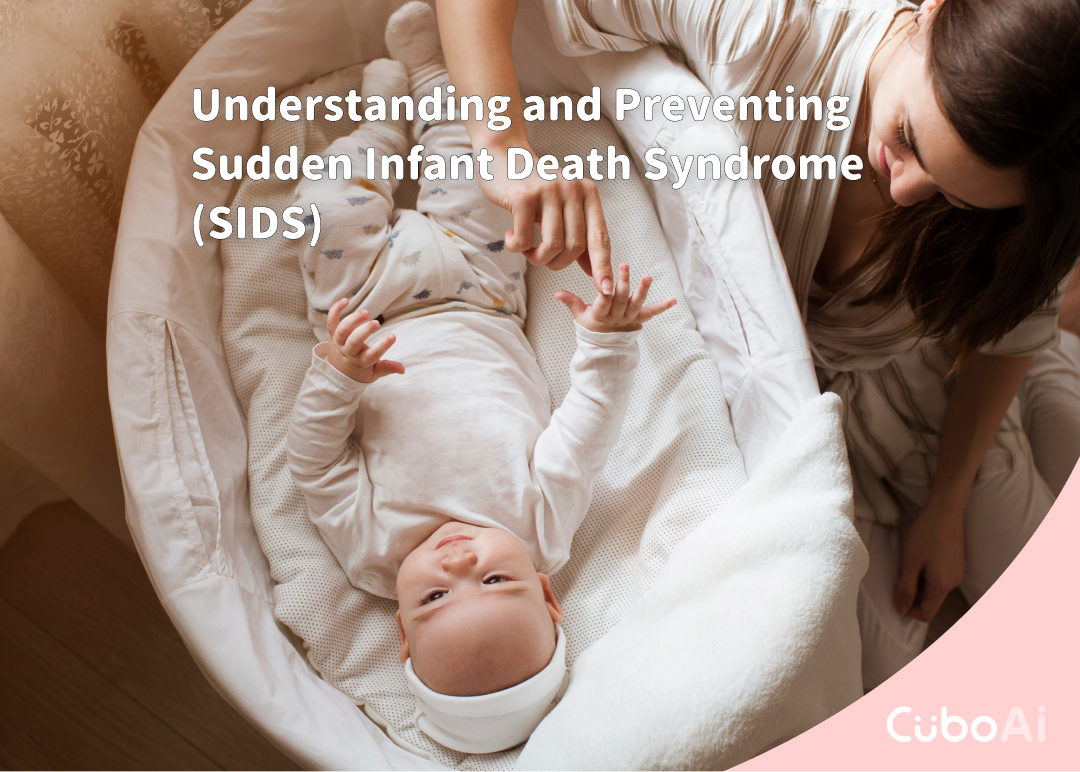Babies and sleep can often seem as if they don’t belong in the same category. I mean, is sleep even a thing when you have a baby? It can be, but you need to understand the science behind it if you ever want it to happen. That’s right, there are scientific reasons why your baby may not be sleeping well.
Sleep is essential for a baby’s growth and development; without it, we would not survive. In fact, newborns spend up to 18-19 hours each day sleeping. But as they grow, their sleep patterns change and mature (#science), and as much as a parent of a newborn may not believe (yet), their baby will eventually develop a more consistent sleep routine.
There are two main types of sleep:
The first is REM (rapid eye movement) sleep, and the second is non-REM sleep. During REM sleep, babies may move, make noises, or even smile. Non-REM sleep is deeper and more restful. Newborns move through active (REM) and quiet (non-REM) sleep in cycles that last about 50-60 minutes per cycle. They might wake up after a sleep cycle and need help getting back to sleep. In active sleep, your baby moves around. You might see jerking, flickering of eyelids or little smiles. In non-REM sleep, your baby is still, and breathing can be shallower. As they grow, these cycles become longer, and babies spend more time in deep, non-REM sleep.
One of the most important factors affecting a baby’s sleep is their circadian rhythm. This is the body’s internal body clock that controls when we wake and when we feel sleepy. The circadian rhythm is controlled by external factors that our bodies are exposed to, such as food, light and social interaction. When it is nice and dark, the sleep hormone melatonin is produced far more readily, but when it’s light, melatonin is suppressed and cortisol (the stress hormone) is produced, making it much harder to fall asleep. These two hormones are produced in the brain, just above the optic nerve.
Circadian rhythms are not fully developed at birth, which is why they often wake frequently throughout the night – this and because they need the calories that come from feeds. As they grow, their circadian rhythms mature, and they begin to sleep for longer stretches at night. Babies are not born producing their own sleep hormones, this comes a little later (around 12 weeks) when their sleep cycles mature to become a lot more adult-like. Prior to this 12-week mark, babies rely solely on the sleep hormones left over from in the womb. This is called maternal melatonin. This is also why they experience day and night confusion.
A baby’s circadian rhythm works alongside their homeostatic sleep drive to help encourage the sleep your little one needs.
So, what is a homeostatic sleep drive?
A homeostatic sleep drive is another type of internal clock, but this one is more like a timer than a clock. It helps remind the body that it needs to sleep after being awake after a certain period, and likewise, after being asleep for a certain amount of time, the pressure to sleep becomes lower.
In combination with these two factors and watching your little one’s age-appropriate awake windows, you can be sure you are getting the best chance of achieving naps and a good stretch of quality night sleep.
Awake windows will vary depending on your little one’s age but there is some consistency regardless of age. From 4 months, your baby will have naturally occurring biological nap windows. They are natural dips in energy levels where your baby’s body temperature and sleep hormones will be optimal for sleep. These occur between 9-10am, 12-2pm and 6-7pm. If you can try to aim for naps and bedtime within these windows your baby will be much more likely to settle easier and sleep more deeply.
As you can see, there is A LOT of science behind all the recommendations around baby sleep and nap times. Routines are suggested to mirror these naturally occurring biological nap windows and be in line with your baby’s homeostatic sleep drive. Trying to have a consistent nap routine and setting your baby’s sleep environment to encourage sleep (for example, a dark room and sleeping bag to control darkness and body temperature) will help to complement the naturally occurring factors that dictate your baby’s sleep.
If you’re struggling with your baby’s sleep, consider looking into the CuboAi Smart Baby Monitor. The market-leading artificial intelligence baby monitor is a game-changer for tracking babies’ sleep and giving tired parents insights and ideas for improvement. With features like real-time alerts, automatic photo capture, and even lullabies and white noise, CuboAi can help ease parental anxiety and promote healthy sleep habits (for both parents and bub!). So, if sleep is something you’re currently struggling with, I often recommend CuboAi as a helping hand!
About Kristy Griffiths
Kristy Griffiths is The Sleep Teacher, CuboAi Ambassador, certified sleep trainer and mum of three gorgeous girls. With personal experience with debilitating postpartum sleep deprivation, Kristy’s expertise covers all areas of sleep teaching, emphasising gentle child and infant sleep training. As a mum who has been there, Kristy is passionate about showing parents how easily their sleep can be fixed.





